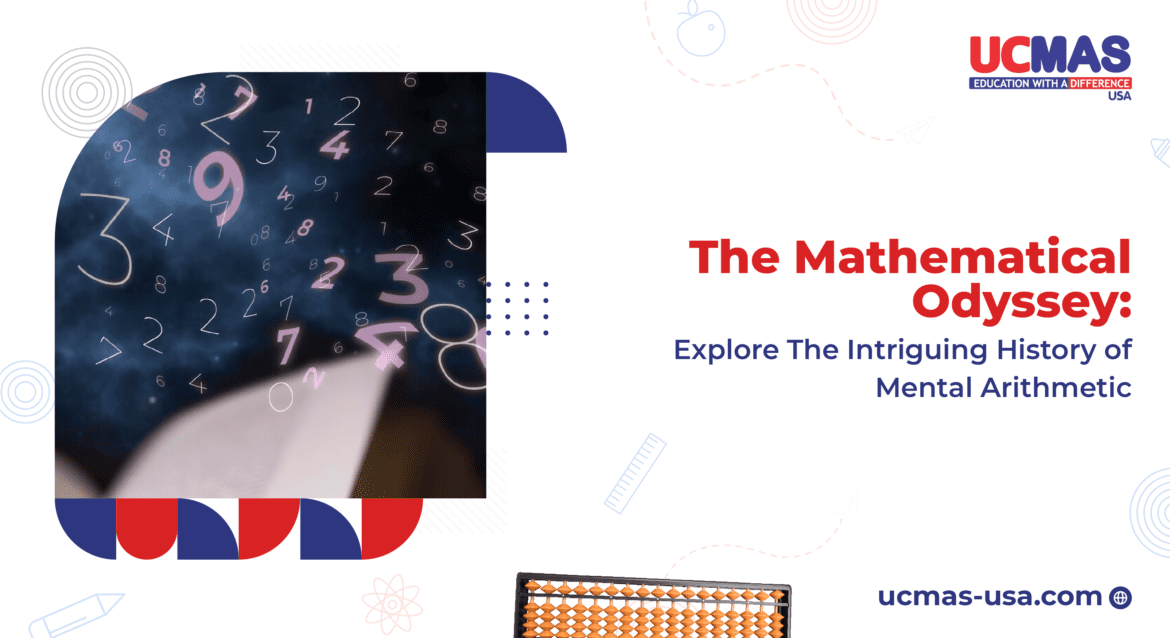Long ago, at the dawn of human civilization, our ancestors grappled with a fascinating challenge: how to measure and quantify the world around them. Thus began the captivating tale of arithmetic. From tally marks etched on cave walls to the evolution of more sophisticated systems like the abacus, the world of arithmetic has undergone an evolution of its own.
Understanding the origins of arithmetic reveals the magic behind the numbers we encounter daily.
Read Ahead:
Arithmetic: The Beginning
The origin of arithmetic can be traced back to ancient civilizations when early humans used the simplest of tools to count and perform basic calculations.
As societies evolved, so did the method of counting. Tally marks, knots in ropes, and pebbles in containers were eventually replaced by numbers. This led to the discovery of mathematical concepts that we are all familiar with today, such as addition, subtraction, division, and multiplication.
To understand the rich tapestry of modern mathematics, let’s dive deeper into the humble beginnings and the evolution of arithmetic that transformed the human race.
How it all started
One-to-One Correspondence: The Building Blocks of Counting
One-to-one correspondence is one of the foundational concepts in the development of arithmetic. It involves matching each item in a collection with a corresponding item in another collection. Imagine a shepherd in ancient times keeping track of his flock; for every one of his sheep, he places a pebble in his bag. This ensured that each of his sheep was accounted for. Similarly, early traders used some form of token or marker to represent goods in a transaction. This process of matching objects one to one laid the groundwork for counting and the development of arithmetic operations.
Counting: From Stones and Symbols to Numbers
Counting emerged as a necessity for early humans to manage their possessions and is the next-simplest arithmetic process. Initially reliant on basic methods like tally marks, sticks, and stones, counting evolved alongside civilization.
Ancient civilizations like the Egyptians and the Sumerians developed numeral systems like hieroglyphic symbols to denote numbers.
Through counting and the advent of numbers, humans tapped into the power of arithmetic to understand and solve complex problems and make sense of the world around them.
Did you know? The origins of counting by early mathematicians probably came into existence the same way children learn to count – on their fingers!
From there, it evolved into more complex operations.
The Evolution of Arithmetic: From Abacus to Algorithms
The evolution of arithmetic from rudimentary tools to advanced algorithms is a fascinating testament to human ingenuity and creativity. Progressing from basic implements like sticks and stones to intricate systems like the abacus revolutionized counting, and paved the way for swift and accurate calculations.
In today’s digital age, we are equipped with sophisticated algorithms that perform complex arithmetic calculations in a fraction of a second. Despite the remarkable leap in technology and innovation, the fundamental principles of ancient math and abacus persist.
How is the abacus still relevant in modern times?
The abacus has existed for thousands of years, yet this wonder is still relevant in today’s digitally advanced world.
The abacus makes math tangible to kids and lays the building blocks for numbers. The hands-on experience children derive by moving the beads on the abacus helps them grasp concepts before memorizing formulas. It acts like a brain gym for children by strengthening memory, concentration, and mental agility, essential skills for holistic development.
Hence, even with the dawn of sophisticated algorithms and fancy calculators, abacus classes and learning programs continue to thrive. This timeless tool paves the way for future math whizzes by offering mental mastery and a deeper understanding of numbers.
Mental Arithmetic and Abacus Classes: Powerful Additions to Program Your Child’s Future.
Abacus classes and mental arithmetic are power combinations that unlock a world of potential for your child’s bright future. Mental arithmetic goes beyond just crunching numbers, it’s a powerhouse for your child’s cognitive development in several ways. Here are a few.
- Abacus classes and mental math practice are natural brain development tools that enhance memory, focus, and concentration.
- Your child develops critical thinking and analytical skills by manipulating numbers mentally with mental math practice or with the abacus.
- Mastering mental arithmetic is empowering! It fosters confidence and a positive attitude towards learning, setting your child up for success.
- Regular mental math practice leads to swift calculations with high accuracy that lay a robust foundation for future math challenges.
Read more on the pros of introducing mental arithmetic and mental math practice to your kids.
UCMAS offers unique abacus classes, scientifically designed to unlock your child’s potential during peak brain development. Our mental arithmetic program offers a fun and interactive learning experience that transforms your child’s math prowess. Enroll your child in the UCMAS mental arithmetic classes today and watch them transform into math whizzes!


